The Role of Women in Mycology: A Tribute
I. Introduction
This Women’s Day Month may we be fully aware that the relationship between science and women has been a hard one. While this blog will show some of the more popular names and the ones that paved the way, we must not forget that mycology as a field has been around long before it was even termed “mycology”. While I would refrain from calling myself a mycologist, I believe this field requires above all, a curious mind which is open to possibilities. Having spent a few years with mushrooms through Nuvedo and understanding their behavior – I continue to be enamored by their ways. As a woman, we’re often challenged in roles of leadership but we do jump from the shoulder of giants (female ones). I must take the opportunity to look back at the women who have contributed to the space and acknowledge their struggle in studying these organisms which even today defy our simplistic, reductionist attempts to categorize or generalize facts about them.
I must add though, that my blog is only a slice of the actual contribution that women have contributed to the space both present and past. Each time I’ve dug deeper I discovered so many incredible women doing the work of the mycelium making this blog, a work in progress.
Women have been making significant contributions to the field of mycology, the study of fungi, for many years. However, their work has often been overshadowed by their male counterparts. In recent years, there has been a growing movement to recognize and celebrate the contributions of women in mycology. In this blog, we will explore the history of women in mycology, their current contributions, and the challenges they face.
“Current estimates suggest that fewer than 10% of all fungal species have been described. It was only in 1969 that fungi were recognized as their own distinct kingdom of life, which has entrenched a disciplinary bias: There are fewer opportunities to research fungi than animals and plants. Even though fungal pathogens are on the rise, no vaccines have been developed against fungal infections, and the small number of existing antifungal drugs are becoming increasingly ineffective” as told by Giuliana Furci and Merlin Sheldrake in a recent TIME Magazine article.
Our early interactions with fungi go back to hunter-gatherer times when women were the central forces behind foraging. Often deemed to be the ones nuanced in skills of identification, while men would go out to hunt. Interestingly, a poem by Neil Gaiman captures exactly this essence of feminism about how “early scientists” found their way through the thick forests, carrying their babies and finding mushrooms.
“The women, who did not need to run down prey,
had brains that spotted landmarks and made paths between them
left at the thorn bush and across the scree
and look down in the bole of the half-fallen tree,
because sometimes there are mushrooms.The race continues. An early scientist
drew beasts upon the walls of caves
to show her children, now all fat on mushrooms
and on berries, what would be safe to hunt.The men go running on after beasts.
The scientists walk more slowly, over to the brow of the hill
and down to the water’s edge and past the place where the red clay runs.
They are carrying their babies in the slings they made,
freeing their hands to pick the mushrooms.“
II. History of Women in Mycology
Here’s a look at some of the historical women mycologists who had immense contributions to the field. Whether it was illustrating morphology or developing taxonomical research, quite a few key aspects have been tapped into:
- Beatrix Potter – Before she became a famous children’s author, Beatrix Potter was a passionate amateur mycologist who studied the life cycle of fungi and illustrated their morphology. She concluded on findings regarding lichen being a fungal-algae combination. Her repeated experimentation with fungi, led her to show the importance of the mycelium beneath the soil and the emergence of a lifecycle with spores.
Helen Beatrix Potter was an English writer, illustrator, natural scientist, and conservationist. Anna Maria Hussey – Anna Maria Hussey was a British mycologist who collected and studied fungi from around the world in the mid-19th century. She was one of the few women who were allowed to attend scientific meetings in her time and worked with M. J. Berkley, to illustrate over 6,000 new species of fungi. For a woman at that time, to assist with identifications and supply him with specimens was a big deal. She also worked with mycologist M. C. Cooke, who cites Hussey in his 1875 Fungi: Their Nature and Uses and called her “friend”. Although published in the name of her husband, a significant contribution was made to Illustrations of British Mycology: Containing Figures and Descriptions of the Funguses of Interest and Novelty Indigenous to Britain.
- Marie-Anne Libert – Marie-Anne Libert was a Belgian botanist and mycologist who lived in the 19th century. She was the first woman to describe and illustrate the genus Agaricus, which includes many edible and poisonous mushrooms.
Marie-Anne Libert was a Belgian botanist and mycologist. She was one of the first women plant pathologists. - Mary Elizabeth Banning: Mary Elizabeth Banning was an American mycologist who lived in the early 20th century. She was the first woman to earn a PhD in mycology from the University of Wisconsin-Madison. Her research focused on the taxonomy and ecology of fungi, and she discovered several new species of fungi. Much like many women in her time, her works remained unrecognized however, now her remarkable and significant book of watercolor illustrations of mushrooms (including some species new to science), has become popular.

5. Marie Curie-Another pioneer in the field of mycology was Marie Curie, who is best known for her work on radioactivity. However, she also made significant contributions to the study of fungi, including discovering a process for isolating pure cultures of yeast.

6. Elsie Maud Wakefield, an extraordinary scientist who served as Head of Mycology at Kew for 40 years. Wakefield studied the fundamentals of fungal sexuality by pairing colonies that developed from mushroom spores. She was a specialist in Basidiomycetes and an international authority on Aphyllophorale. Her dedication in setting up the Herbarium at Kew elicited Wakefieldia and Wakefieldiomycesare as two genera named in her honor.
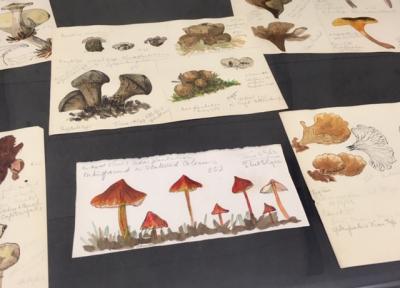
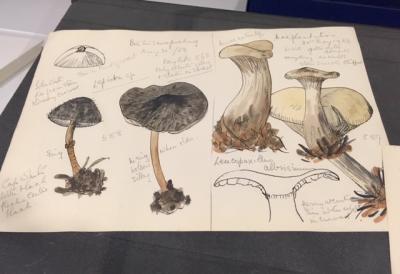
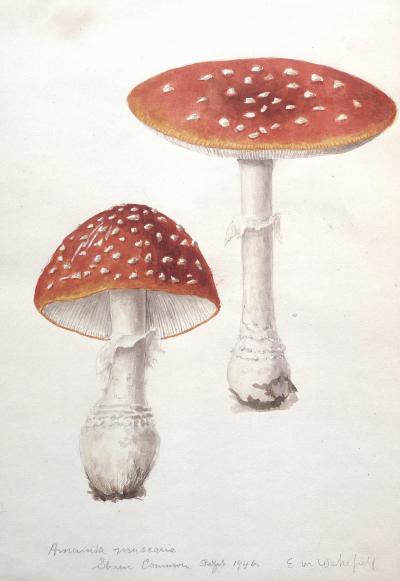
III. Indian Women in Mycology
While the scientists that I will list below have come out in recent years with incredible work, I am taking a moment to acknowledge the tribal women in India. India has the biggest Adivasi population in the world – in these communities lie plenty of “mycologists” doing work in understanding their intricate role in our ecosystems, their multitude of medicinal properties and also working with mushrooms to create culinary delights that many are yet to taste. Women in tribal communities in India have played important roles in the collection, processing, and consumption of forest products, including mushrooms and fungi. In many cases, women are the primary guardians of forests and that it provides, and their knowledge and skills are essential for the sustainable use and preservation of these organisms and their intricate relationships with the forest ecosystem.
For example, a study published in the Journal of Economic Botany in 2003 documented the traditional knowledge and practices of women in the Kumaon region of northern India in relation to wild mushrooms. The study found that women in this region were skilled at identifying and harvesting different mushroom species, and had developed a range of techniques for preserving and cooking mushrooms. The study also noted that women were the primary caretakers of the forests in the region, and played a key role in the conservation of forest resources.
Very interestingly, a recent study in the Journal of Pharmacognosy and Phytochemistry showcased the role of women in mushroom farming and the development of a gender-sensitive entrepreneurship model for enhancing income. This study was done in Demando and Baliapada villages from the Cuttack district of Odisha. Findings demonstrated that there was a strong correlation between the success of a farm and the number of women stakeholders involved.
- Dr. Meera Pandey – Dr. Pandey is a mycologist and researcher who has conducted extensive research on the biodiversity and ecology of fungi in India. Her work focuses on the use of molecular tools for the identification and classification of fungi, as well as their role in soil ecosystems. Having also trained under her, I do believe her expertise and passion for the field have been immense.
- Seema Sangwan– Dr. Sangwan is a mycologist and professor at Indian Agricultural Research Institute in India. Her research focuses on the diversity and ecology of fungi, particularly those that are important for agriculture. She has also conducted research on the use of fungi in bioremediation and the dynamic interactions of plants and arbuscular mycorrhizal fungi.
- Veena Prakash – Veena Prakash is an Indian mycologist who has made significant contributions to the study of fungal taxonomy and biodiversity in India. She has authored numerous research papers and has been actively involved in the documentation and conservation of fungal diversity in India.
- Latha Rangan – Latha Rangan is an Indian mycologist who has published several research papers on the identification and classification of fungal species and has been actively involved in promoting the study of fungal diversity and taxonomy in India. Her work in mycoremediation and sustainable agricultural practices is one to note. Her paper published, focused on soil amendment techniques, which use biochar in combination with Arbuscular mycorrhizal fungi (AMF), which is an indispensable biotic component that maintains the plant-soil continuum.
- Dr. Bina Gupta, has worked on the diversity of fungal species in India, including the taxonomy and ecology of rust fungi, which are important plant pathogens. She has also contributed to the understanding of fungal endophytes, which are fungi that live inside plants without causing any harm to the host plant.
- Dr.Vrinda K.B. is another prominent woman mycologist in India who has worked for 30 years on the mushroom taxonomy and characterization of species across the state of Kerala.
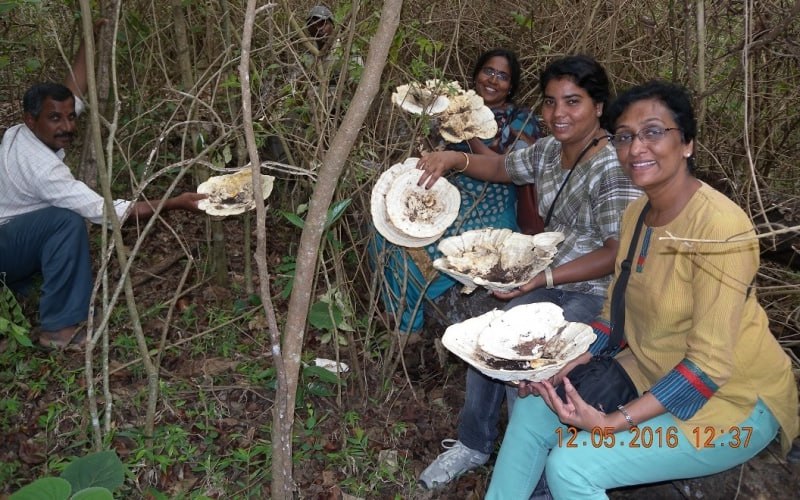
IV. Current state of women in mycology
Today, there are many women working in mycology and making important contributions to the field, including Dr. Kathie T. Hodge, an associate professor of mycology at Cornell University. A recently notable work that has created some waves is the connection she found between the fungus Cordyceps subsessilis (exceedingly rare beetle pathogen) and Tolypocladium inflatum which a mould that grew on this particular fungi. Back at the lab, its spores germinated to form colonies Tolypocladium inflatum which is infact the source of the important immunosuppressant drug cyclosporin.
Dr. Anne Pringle, a professor of botany at the University of Wisconsin-Madison, who studies the invasion & conservation biology of fungi specifically, the death cap mushroom Amanita phalloides as a model. Her work is involved in conservation, which is a rapidly developing focus for research with microbes. This interdisciplinary approach to conservation aims to facilitate dialogue among the diverse stakeholders who care about fungi. She urges stakeholders to collect “baseline” data documenting fungal biodiversity and the impacts of the movement of soils and fungi by humans over the last century.
As I mentioned above, mycology is not limited to a mere formal study or research but to art and awareness like the works of Marion Neumann. Her documentary, The Mushroom Speaks, explores the healing qualities of fungi and their ability to regenerate. To offer ideas of interconnectedness and collaboration, her deeply emotional documentary is what we need today, to build the emergent culture surrounding fungi.
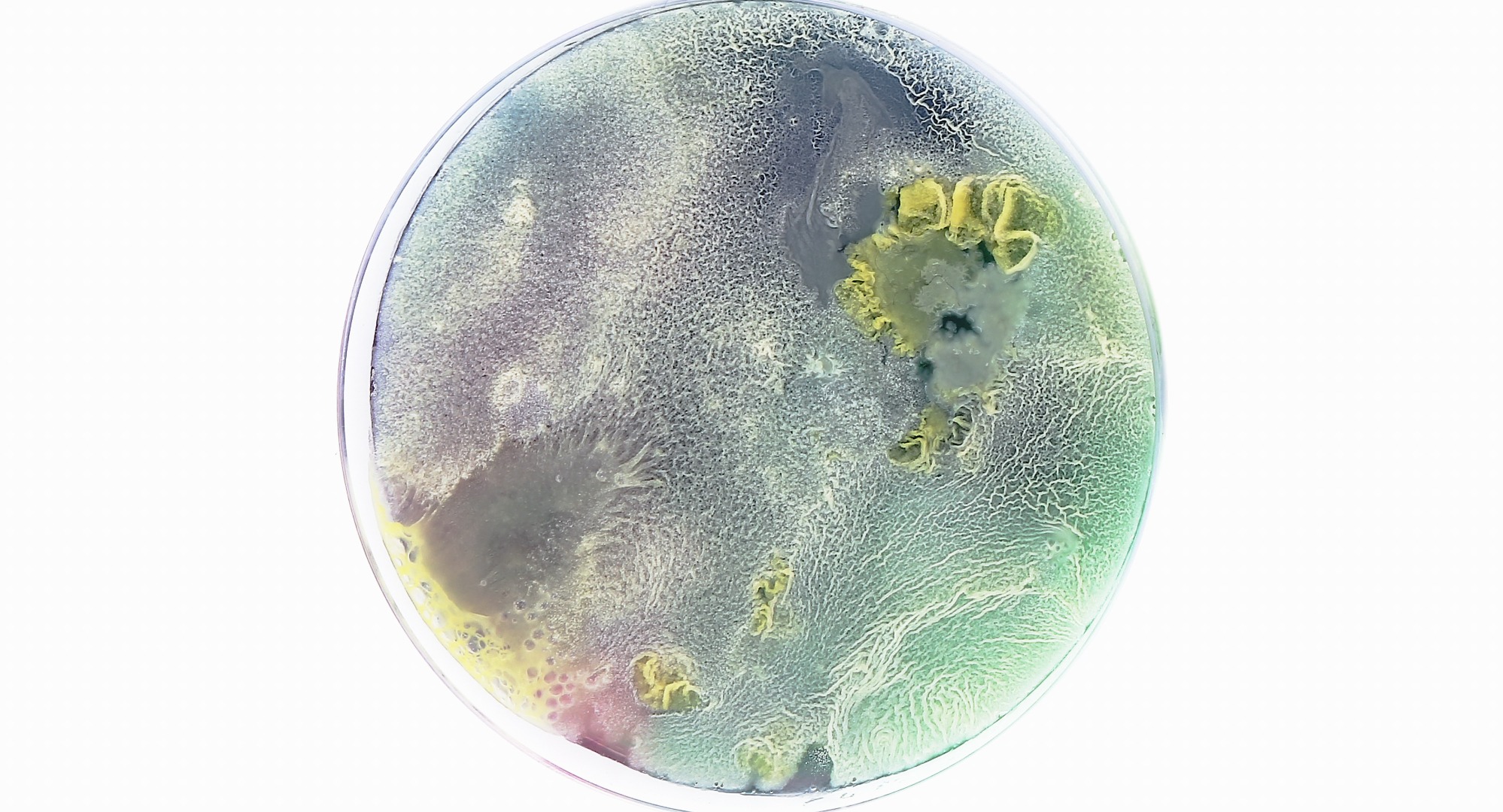
Mycologists like Dr. Rachel Swenie, are studying the impact of fungal pathogens on crops as well as taxonomical updates to current fungi. Last year she worked on describing a new species, Cantharellus vicinus, an oak-associated chanterelle known only from lower-elevation areas in east Tennessee, USA based on phylogenetic and morphological data.
A well-known mycologist, activist, and key inspiration for me, is Giuliana Furci who founded the worlds first NGO dedicated to fungi. Giuliana was also the first female mycologist of non-lichenized fungi in Chile. She was self-taught for 16 years. Giuliana has co-authored 14 research papers, including the one delimiting the term “Funga”, the latter being the initial point for the FFF Initiative (Fauna, Flora, Funga) which advocates for the use of mycologically-inclusive language worldwide.
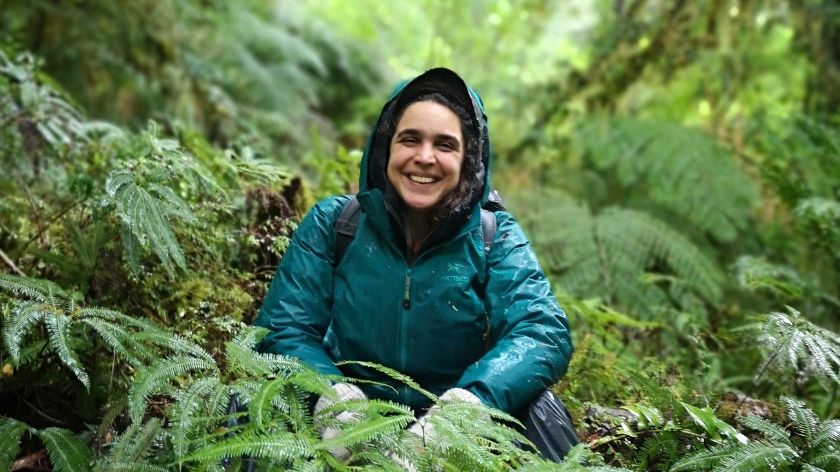
Some very young scientists, like Anne Pringle, an American mycologist who studies the ecology and evolution of fungi in natural ecosystems. Her research has helped to elucidate the role of fungi in nutrient cycling and has contributed to our understanding of the impacts of climate change on fungal communities.
Despite so many years of research and work put into mycology, we see challenges with the lack of support for women in the field. Women may face barriers to funding, networking, and mentorship, which can make it difficult for them to advance in their careers.
The underrepresentation of women in STEM fields has been a longstanding issue, and while progress has been made in recent years, there are still significant challenges that women face. One of the most pervasive of these is unconscious bias, which can manifest in hiring, promotion, and evaluation decisions, and can perpetuate gender stereotypes that discourage women from pursuing STEM careers. For example, studies have shown that men are often evaluated more positively for the same work as women and are more likely to be given credit for their ideas.
Harassment is another challenge that women in STEM fields face. Studies have found that women in STEM are more likely to experience sexual harassment than women in other fields, and that this can lead to a lack of confidence, a loss of interest in STEM careers, and even mental health issues. Moreover, women of color and LGBTQ+ women are often subjected to even more severe forms of harassment and discrimination.
Addressing these challenges requires a multi-pronged approach that involves education, policy changes, and cultural shifts. For example, organizations can implement unconscious bias training and diversity programs, as well as policies that make it clear that harassment will not be tolerated. Additionally, creating more inclusive and supportive work environments can help women feel valued and supported in their STEM careers. Ultimately, it is essential to work towards a cultural shift that challenges gender stereotypes and promotes gender equity in STEM fields.
IV. The importance of diverse perspectives in mycology
Women have also contributed to the field through their innovative research, which has led to important discoveries about fungal biology and ecology. Women have made significant contributions to the study of fungi, bringing unique perspectives and insights to the field.
In my opinion, mycology as a field has broken some of the biggest barriers in explaining traditional ecology. Proposed by Patricia Kaishian and Hasmik Djoulakian who explains, “science of mycology through a queer theory framework with the intention of situating the state of the field in a historical and social context. Our scientific understanding of mushrooms and other fungi have been shaped and indeed impeded by mycophobia, a condition of fear and revulsion that we compare here to queerphobia.”

“Mycology is a science that, by its very nature, challenges paradigms and deconstructs norms. Mycology disrupts our mostly binary conception of plants versus animals, two-sex mating systems, and discrete organismal structure, calling upon non-normative, multimodal methodologies for knowledge acquisition. Mycelium is the web-like network of fungal cells that extends apically through substrate, performing sex, seeking nutrients, and building multi-species and multi-kingdom symbioses,” writes Patricia.
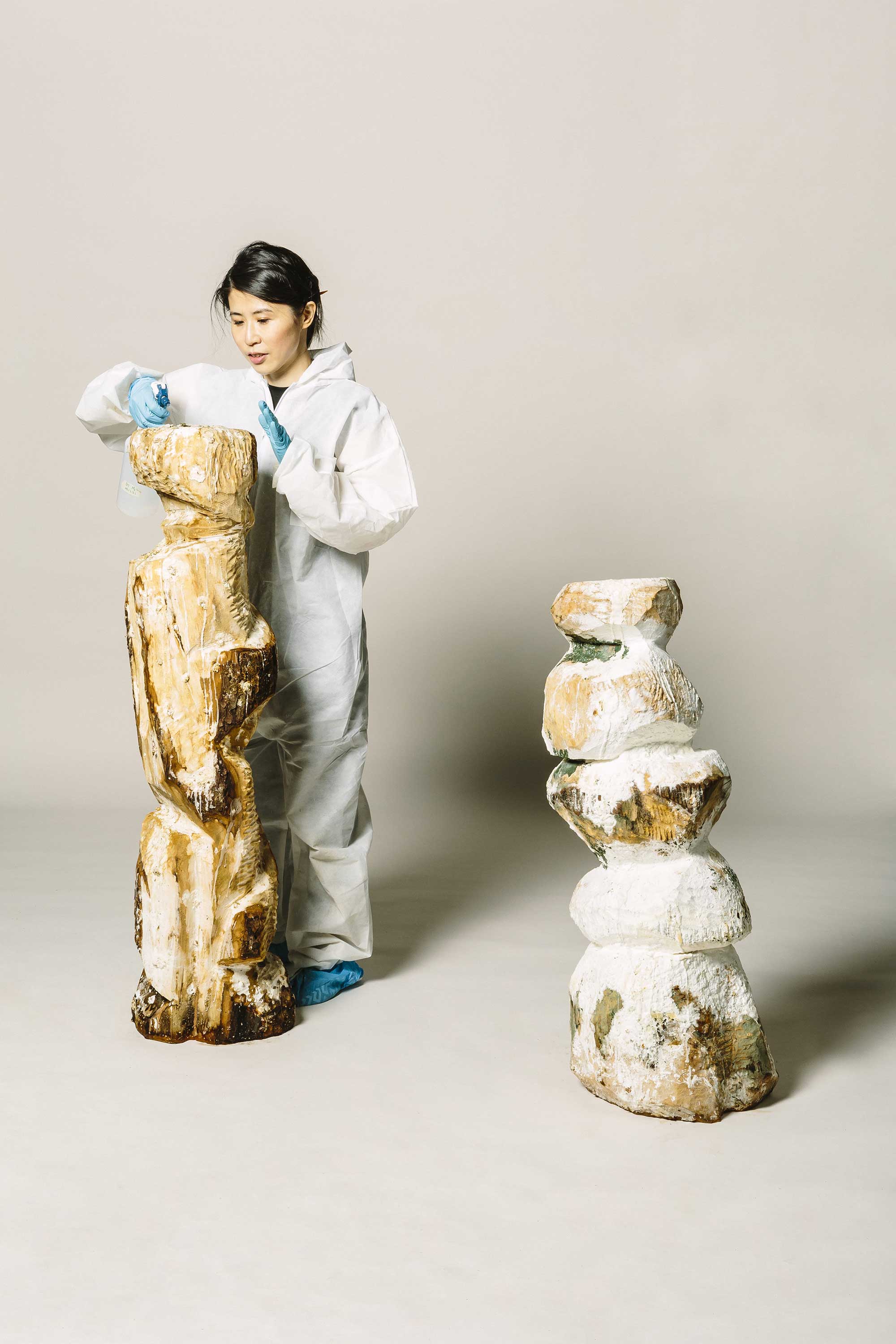
Through different mediums of art, including performance arts, artists tend to become mycologists in their own way by using their work to explore the world of fungi and challenge the norms of society. Much like the installation of Calculus of an infinite rot by architect and researcher Andrea Shin Ling that taps into of the connection between decay and regeneration. “Decay and regeneration are paired processes, where the entropy of one system is used for the organization of another. Through decay, the differentiation occurs between humans, trees, insects, and microbes blurs, as parts of us become parts of them and vice versa, in a process that is leaky, smelly, and messy,” explains Ling.
Exposing people to the rot of 34 stumps of fallen trees, injected with fungal and bacterial injections, she has created an olfactory experience to stay and embrace what we must know as an integral part of death and decay. A strongly moving piece that I could not help but add out here.
Whether it’s art or science, there is no difference. Dr. Joan Bennett is a pioneer in the study of fungal genetics and the role of fungi in the environment. Her research has led to a greater understanding of how fungi interact with their surroundings and the important ecological functions they serve. The Bennett laboratory studies the genetics and physiology of filamentous fungi. In addition to mycotoxins and other secondary metabolites, research focuses on the volatile organic compounds (VOCs) emitted by fungi. These low molecular weight compounds are responsible for the familiar odors associated with the molds and mushrooms. Similarly, Dr. Lynn Margulis revolutionized our understanding of the evolution of eukaryotic cells by proposing the endosymbiotic theory, which suggests that eukaryotic cells evolved from the merging of different types of cells, including fungi. Integrating fungi into education like what Sue Van Hook an educator and founder of the company “Mushroom Maestros,” offers classes and workshops on mushroom cultivation.
Women have also brought important perspectives to the study of mycology, the branch of biology that focuses on the study of fungi. For example, women have been instrumental in promoting the study of mycology from an interdisciplinary perspective, integrating knowledge from fields such as ecology, genetics, and chemistry to gain a deeper understanding of fungi and their roles in the environment.
Overall, the contributions of women to the study of fungi have been vital, bringing unique perspectives and insights to the field and driving important advances in our understanding of fungal biology, ecology, and potential applications. The role of women in mycology is crucial for understanding the complex and fascinating world of fungi. Today, we pay tribute to the brilliant female minds that have advanced our knowledge in this field. It’s time to push mushroom queens to the forefront and elevate their voices and perspectives. We need more women writing about their experiences in mycology, sharing their knowledge and expertise, and inspiring the next generation of female mycologists.
#MushroomQueens #FungiFridas #WomenWhoMoldMinds
Other References:
- “Women in Mycology: A Study from India” by Jitendra Kumar, Manju Sharma, and Jai Prakash Sharma. Journal of Mycology, 2016. This article discusses the role of women in mycology in India, including their contributions to the field and the challenges they face.
- “Mushrooming Women Entrepreneurs in India: A Study of Socio-Economic Empowerment through Mycology” by Jaya Jaitly and Vijay Kumar. Journal of Entrepreneurship Education, 2016. This article explores the growing trend of women entrepreneurs in the mushroom industry in India, and how mycology has become a tool for their economic empowerment.
- “Mycology in India: A Review” by S.K. Singh, S.B. Singh, and M. Ojha. Mycological Progress, 2012. This review article provides an overview of the history of mycology in India, including the contributions of women scientists.
- “Women in Mycology: Diversity, Challenges and Opportunities” by Joan W. Bennett. Mycologia, 2019. This article discusses the underrepresentation of women in mycology globally and provides recommendations for increasing diversity and equity in the field.



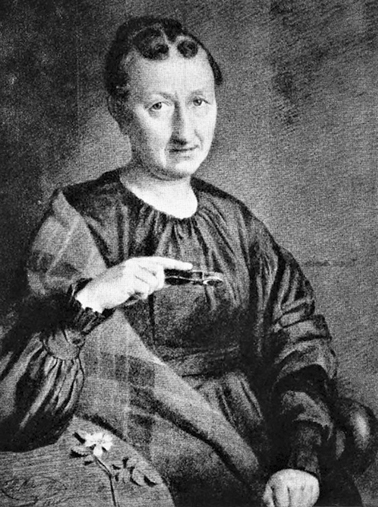
 Co-founder at Nuvedo, foodie, health & nutritionist enthusiast, yoga practitioner, and mental health advocate she spent her time studying and observing the therapeutic and healing benefits of mushrooms. Calling herself a startup catalyst, venturing into the agriculture space through a sustainable business model she hopes to build the right awareness about fungi and food for future generations. Her greatest vision for Nuvedo is for people to bring back control of their food and diet through mushrooms. At Nuvedo, she ties back to communities of farmers and is hoping to build India’s mushroom revolution.
Co-founder at Nuvedo, foodie, health & nutritionist enthusiast, yoga practitioner, and mental health advocate she spent her time studying and observing the therapeutic and healing benefits of mushrooms. Calling herself a startup catalyst, venturing into the agriculture space through a sustainable business model she hopes to build the right awareness about fungi and food for future generations. Her greatest vision for Nuvedo is for people to bring back control of their food and diet through mushrooms. At Nuvedo, she ties back to communities of farmers and is hoping to build India’s mushroom revolution.